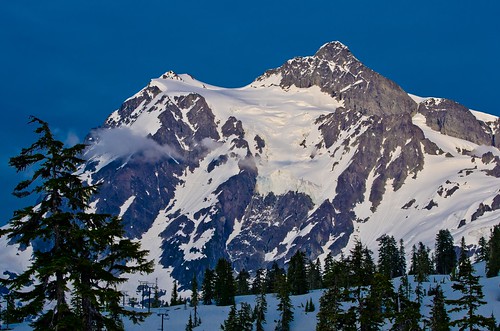
The Four Seasons is not just a hotel chain. Even if you live under a rock you can tell that your surroundings change in sights, sounds and smells through out the calendar year. The fastest change in the environment for me happens between fall and winter. The leaves start to change color and the next thing you know the ground is littered in color. Soon after the cold rolls in and winter has arrived.
Some genres of photography see large drops in activity in the winter just because most people schedule their events and engagements for warmer days and when travel is more convenient.
But for outdoor enthusiasts and landscape photographers winter just gives them more scenarios and opportunities to go out and shoot either a new location or revisit one that they have shot in the past during another season.
Some of locations even during most favorable conditions take a lot of work to find the right light and angle for a favorable composition. But dump a few inches of snow and that lackluster over look the DOT put in suddenly changes when the hillside or mountain top is lathered in white fluffy snow.
There are a few good reasons why some photographers put away their gear during the winter months but I have a few tips and tricks to help you still manage to keep shooting even when conditions seem less hospitable.
Part 1. Winter Driving for Photographers
Until you arrive at the trail head or your destination and set up your camera you are not any different, better or more important than the other commuters on the roadway be it passenger cars, buses or trucks. Just cause you want to be somewhere for sunrise or sunset does not mean you can force yourself through traffic any faster than the rest of us. Yes, even having a 4x4 or having grown up in Buffalo, NY and having years of over the road experience in snow and ice does not matter when you are sharing the road with other drivers. Leave early, slow down and keep your eyes on the road is a better choice than overestimating your driving skill or your vehicles ability and ending up in a ditch or worse injuring another person because you slid into their lane.
After prepping your gear and go bag, next thing you want to prep is your vehicle. This will get you from Point A to Point B and hopefully back home safely. So you can see how important it is to have a safe and functional vehicle especially when you will be away from home and shelter for an extended period of time during the cold winter.
Would you hand over your car keys to your child or parent right now?
Or would you be concerned that the tires may be low on air or even have bald tread. Do the brakes squeal, does the car shake when you apply the brakes, does the heater not work, is a head lamp out??
Taking your daily driver to work with its faults and quirks is different from road tripping out to a lake or mountain pass. You don't want to run into a mechanical situation or accident miles away from home. Being stranded in an unfamiliar place can be scary, unsafe, time consuming and expensive.
During my travels on the roadways of America I have come across travelers that simply ran out of gas 40 miles from the nearest gas station on a rural highway and their passengers were quit eager reimburse me for my 2.5 gallons I offered them. Others left the roadway and their sedan did not have the clearance to make it back onto the blacktop. Instead of scrapping their cars undercarriage along the asphalt rise you would think they would scavenge some flat rocks and built an impromptu mini ramp to scale the burm. Luckily that driver did not damage his engine or oil pan trying to rock his way onto the roadway before I got his kids looking for flat rocks and in less than 5 minutes they were back on the road.
Is your car road trip ready?
Meaning no obvious or current mechanical problems. Are your tires properly inflated, have even tread wear and good tread depth? Trying to change a tire on the side of a 2 lane rural road with your photogear and trunk junk on the side of the road is not fun nor safe. So make sure you have 4 good tires and a spare. AND ALL THE PARTS TO CHANGE A TIRE. (wheel chocks, car jack, proper lug wrench and wheel locks)
All engine and vehicle fluids are topped off and you have extra. Engine Oil, Radiator Fluid, Transmission Oil, Brake Fluid, Windshield washer fluid. Road Trips can put a lot more stress on the vehicle than you may think and its good practice to routinely check your fluids year round. You don't want to be low on oil or burn up your transmission while out in the country because you are a turn key driver. Your wallet will thank you later too.
During winter snow, ice and wet debris can stick to your windshield and side mirrors. Having an ice scrapper, towels and window cleaner in your vehicle will help you keep them clean and functional = safe.
Once your vehicle checks out to be road trip ready you can pack your Go Bag and Camera Gear and start off on your journey safely.
